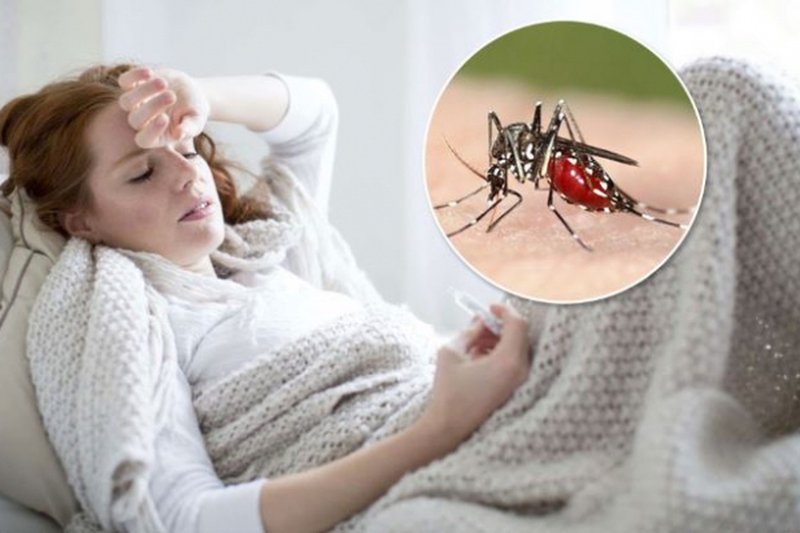Recognizing signs of malignant malaria
Malaria is divided into two main types: common malaria and complicated malaria - malignant malaria. If not detected and treated promptly, the risk of death is very high.
1. Symptoms of malignant malaria
1.1. Cerebral malignant malaria
Up to 80-95% of patients with malaria complications are cerebral. Manifestations of this form of disease are:
Consciousness disturbance is a prominent premalignant sign with symptoms such as lethargy or irritability, slurred speech, and delirium. The patient has a persistent high fever. Losing a lot of sleep. Severe headache. Vomiting or diarrhea a lot. Psychiatric syndrome: the patient has a sudden or gradual coma, a coma that gradually deepens. Patient has epileptic seizures. Sphincter disorders, dilated pupils. In addition, the patient may appear other signs such as:
Respiratory disorders or respiratory failure due to cerebral edema, sputum sputum. Blood pressure decreases due to dehydration or increases due to cerebral edema. Patients may also have renal failure, oliguria or anuria, high blood urea, hematuria due to massive hemolysis. This is a common form of malignant malaria and has a mortality rate of 20-25%.

Sốt rét ác tính thể não thường gặp nhất
1.2. Hemoglobinuria malignant malaria
Hemoglobinuria is a severe form due to massive hemolysis leading to cardiovascular collapse and kidney failure. The patient has the following symptoms:
The patient has a severe fever. Vomiting dry or vomiting yellow discharge. Backache. Jaundice of the skin and mucous membranes due to hemolysis. The patient has hemoglobin in urine, the urine is red-brown, then turns to coffee color or thick water color. Urine output gradually decreases and eventually anuria occurs. Anemia and acute hypoxia. When tested, red blood cells and hemoglobin will decrease sharply.
1.3. Cold-type malignant malaria
Patients suffering from this disease will have the following symptoms:
The patient's whole body is cold. Hypotension. Pale skin. Sweat a lot. Headache.
1.4. Pulmonary malignant malaria
Patient has difficulty breathing, rapid breathing, can spit up pink foam. Cyanosis. When listening to the lungs, the doctor will see many moist, snoring rales at the base of the lungs.
1.5. Hepatobiliary malignant malaria
Patient has jaundice, yellow eyes. Nausea and vomiting. Stools are yellow, urine is yellow and rich in bile salts. The patient is comatose.
1.6. Gastrointestinal malignant malaria
Patient has the following symptoms:
Abdominal pain. Vomit. Acute diarrhea. Hypothermia.
1.7. Malaria in pregnant women
Pregnant women with malaria are very susceptible to severe malaria or cause miscarriage, stillbirth or premature birth.

Sốt rét ở phụ nữ có thai cũng là thể sốt rét ác tính
1.8. Congenital malaria
This form of disease is rare, the disease occurs when the pregnant mother is infected with malaria and has damage to the placental cells separating the mother and child. The disease appears soon after birth, the baby is fussy, has fever, jaundice, hepatosplenomegaly.
1.9. Malaria in children
Babies over 6 months old are susceptible to malaria due to the loss of maternal immunity and hemoglobin T. Infected children often have symptoms such as:
Continuous or fluctuating high fever. Vomit. Diarrhea. Stomach distended. Enlarged liver and spleen. The child has meningeal signs and convulsions.

Trẻ em khi bị sốt rét có tỷ lệ tử vong cao
2. What to do when detecting a patient with severe malaria?
Malignant malaria has a high mortality rate, so it is necessary to detect and treat it promptly to avoid danger to the patient.
Patients in villages, hamlets: when the patient has signs of premalignancy, it is necessary to immediately give 1 dose of a combination antimalarial drug: Dihydroartemisinin + Piperaquine phosphate. After that, it is necessary to quickly transfer the patient to a higher level. Patients at commune health stations: when detecting patients with pre-malignant signs, intravenous artesunate should be injected immediately: Artesunate 60mg vial with 1ml of 5% sodium bicarbonate and 5ml of sodium chloride 9‰, the first hourly dose is 2, 4 mg/kg body weight. In case of cardiac failure, switch to intramuscular injection, the dose for IM for adults is one injection of a whole ampoule of Artesunate 60mg mixed with 1ml of 5% sodium bicarbonate, it is necessary to shake well to make the solution clear before injection.
Then it is necessary to transfer the patient to a higher level. It should be noted that absolutely do not transfer patients in a state of shock or convulsion or acute pulmonary edema.
Patients at the hospital: patients with severe malaria will be injected with Artesunate intravenously with the first hourly dose of 2.4mg/kg body weight. After 24 hours, repeat injection of 1.2mg/kg body weight. Next, inject 1 dose of 1.2mg/kg body weight per day until the patient can drink, then switch to oral drug form for 7 days. Malaria is a serious form of malaria that, if not treated promptly, can lead to death. Therefore, when detecting a patient with these symptoms, it is necessary to urgently bring the patient to the nearest medical facility for timely treatment, to avoid dangerous complications for the patient.
Để đặt lịch khám tại viện, Quý khách vui lòng bấm số HOTLINE hoặc đặt lịch trực tiếp TẠI ĐÂY. Tải và đặt lịch khám tự động trên ứng dụng MyVinmec để quản lý, theo dõi lịch và đặt hẹn mọi lúc mọi nơi ngay trên ứng dụng.
Bài viết này được viết cho người đọc tại Sài Gòn, Hà Nội, Hồ Chí Minh, Phú Quốc, Nha Trang, Hạ Long, Hải Phòng, Đà Nẵng.





